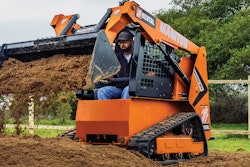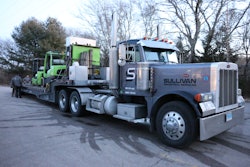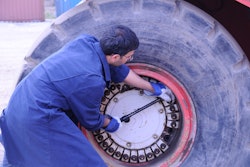
If you have been trying to get ahold of me during the past couple of months, it most likely has been difficult. I've been traveling to growing regions, like Texas or Southwest states, where RDO Equipment Co. team members work diligently to keep contractors up and running. At several locations, rental fleet inventories are back to pre-pandemic levels, and in most other places, they are growing.
The last time we saw this phenomenon was early in 2020, before the worldwide pandemic caused supply chain shortages. So many wonder, "What does this mean for my business as I go into year-end planning and look to bid on jobs in the new year?"
To help contractors plan, I previously shared steps to safeguard their business during an unstable market. While these steps still hold, it’s also an excellent time to take a minute to re-evaluate the rental and used equipment market, its recovery since the COVID-19 squeeze, and how contractors can update their strategy for rental or used equipment to complete jobs on time and budget in the coming months.
First, let's consider the rental and used equipment availability and pricing.
Rental and Used Inventories Recover
According to the Rouse Services Market Trend Report, equipment volume is up an impressive 25% versus the prior year. (Rouse Services has been delivering timely equipment metrics with accuracy and reliability for decades for those in the construction industry. I recommend checking out some of their market trend reports if you have the time.) The factory floor increase in churning out machines inspired dealers to replenish their rental inventories to meet the immediate needs of contractors.
With newer equipment on dealers' lots, general managers are now able to work more closely with their customers to get them the equipment they want through the purchasing strategy that works for them, whether that’s buying new or used or renting it. Contractors’ demand varies by location and type of work their team needs to complete, so used equipment inventories are now uniform.
Rouse Services reported a steady softening in equipment prices for the tenth consecutive month. Because of this opportunity, hard-to-locate equipment — like dozers or excavators — is now available in most rental fleets.
Used Equipment Enters its "New Normal"
Used equipment availability is returning to "normal," or perhaps its new standard, which does share similarities to the latter half of 2019's used equipment market. Looking ahead, we can expect the used equipment market to be affected by some of the same industrial and political landscape that were factors in 2019, including an upcoming election, labor challenges and opportunities in technology, and a new twist a war in the middle east. Those factors can impact business differently but tend to impact used equipment availability as buyers are motivated to save money and opt for used machines when available. The future of the market is still being determined. With increased equipment availability and softening prices, contractors should take advantage of value for money when buying used equipment.
In this more normalized market, used equipment prices return to being responsive to the market – the more popular the machine, the scarcer it will be. For example, large used machines may take time to locate as other contractors may hold onto machines like concrete slip-form pavers that are only a few years old until they see interest rates drop. Remember, when purchasing used equipment, it is essential to consider its age, total hours, and previous work history. Before buying used equipment, consult a trusted partner and schedule an inspection.
Demand Across Industries Levels Off
Demand for equipment in the housing and infrastructure sector has varied due to economic factors like increased interest rates and changes in government spending. There is an old saying, “Don’t fight the Fed.” And this is an excellent rule to live by, despite any differences in supply or demand. This fall, Reuters reported Atlanta Federal Reserve President Raphael Bostic and policymakers said they had no urgency to raise interest rates again. Still, it will likely be some time before rate cuts are appropriate. As I write this, interest rates currently hover around 5.5%. While this is not as high as in previous months, the market effects are apparent: more and more people are delaying big projects until the interest rates are more favorable.
According to the National Association of Homebuilders, multi-family housing start rates are down compared to previous years. However, single-family new construction builds have increased this summer due to some buyers taking advantage of incentives offered by homebuilders. It is interesting to note that these incentives, in many cases, are being funded by the lower cost of lumber, which has decreased by 30% in price during the last five years. Another supply chain factor that should have been foreseen by many. New construction permit numbers have stayed the same across the U.S. but are improving in Southern states, including South Carolina, Texas and areas in California.
The housing market’s demand volatility has been evened out somewhat by the promise of funding from 2021’s Infrastructure bill. As of this fall; states have committed $36.4 billion in highway and bridge formula funds to support over 24,000 new projects. This is in addition to $53.5 billion in investment and over 29,000 new projects supported during 2022, according to the American Road and Transportation Builders Association. In 2024, contractors can take advantage of part of the $110 billion in grants and other funds to be distributed during the next ten years by United States Department of Transportation. Contractors should continue to expect roads and bridges to be significant drivers of demand, as well as an increase in utility jobs as part of the investment to increase access to broadband internet.
So Now What?
So, are we optimistic about the next few months? While I’m not shouting the good news from the rooftops, I am less worried than some others after a few challenging months (or was it years?) of rising interest rates and unstable markets. To optimize productivity and get the most bang for your buck, here are a few things to remember when looking at rental or used equipment solutions.
1. Cut Fuel Costs
According to Reuters, oil prices have been rising since June following a similar OPEC announcement that it will cut crude oil production through 2024. Following that announcement, oil prices have climbed 30%, and continued geopolitical uncertainty may cause this to continue.
As oil prices increase, consider offsetting those higher fuel costs by using compact construction equipment to complete jobs, instead of larger machines. We still may be a few years from the electrification of equipment of all sizes, but some smaller machines can be used now to reduce fuel costs.
2. Automate Machine Maintenance
More than ever, contractors should ensure an efficient system for continuously monitoring their machine's health. Besides watching fuel efficiencies, machine monitoring software recognizes problems before they occur through automated notifications sent to a support team.
3. Consider Which Machine Control Technology Will Optimize Consistency
Most project managers I’ve talked to agree that machine control makes a difference in consistent productivity. During a recent jobsite visit, Hammett Excavation's Project Manager Darin Stroud, an operator who's worked with GPS technology for more than 20 years, said machine control technology has made a significant difference, increasing productivity by 70%. Now, nearly all of their fleet, including machines of different ages, are fitted with some type of machine control and GPS technology. Depending on the type of machine, some of these solutions can be added to your existing equipment, even if it’s a few years old. Talk to a trusted partner to consider the options. What questions should you ask about technology to ensure it fits your unique needs?
Depending on the market you live in and work in will determine the opportunity for selecting the right used or rental equipment. While we anticipate market changes in the first two quarters of 2024, contractors can take advantage of technological advancements, replenishment of equipment inventories and less competition in demand in other sectors.


















